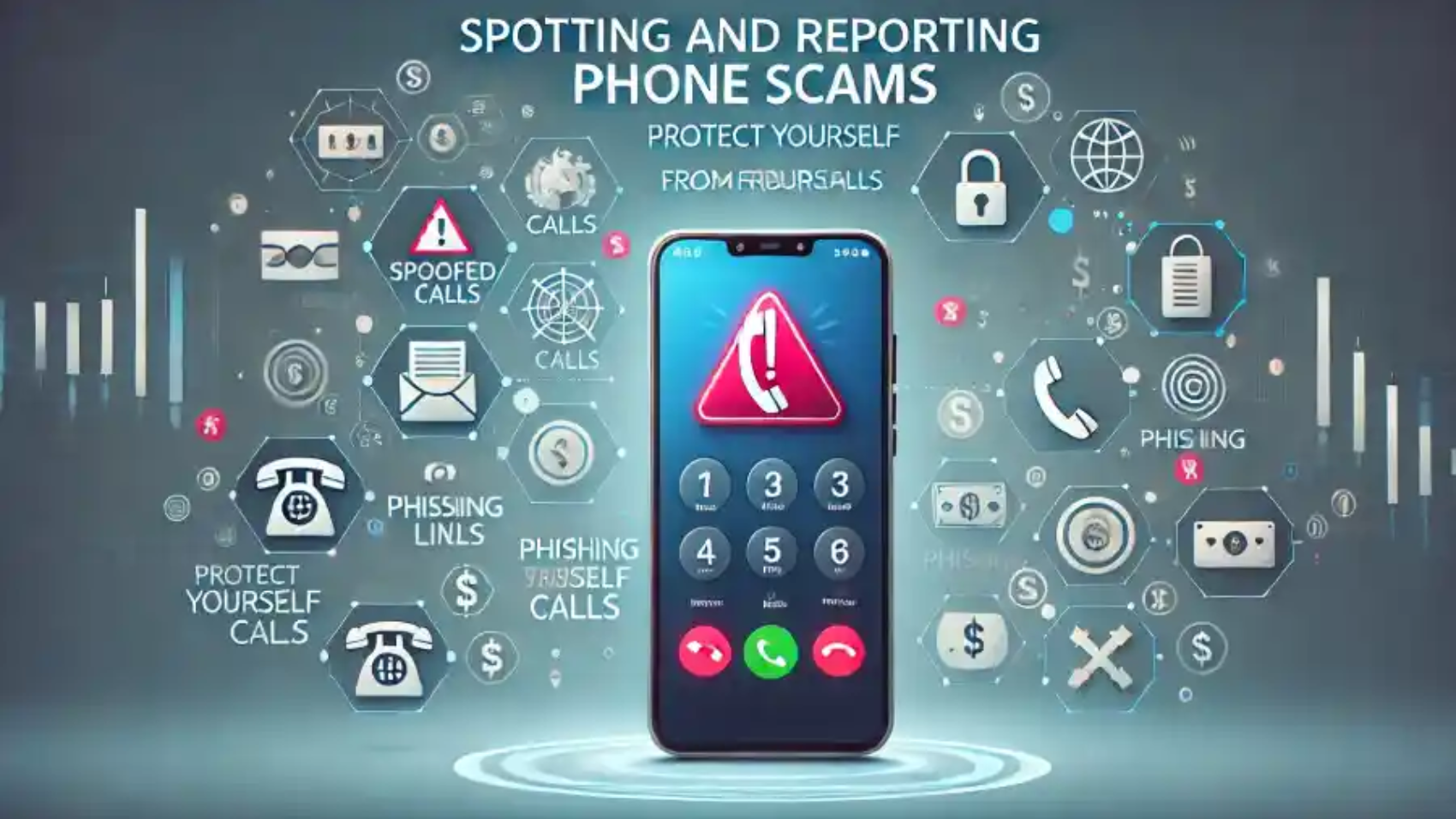Phone scams are on the rise, targeting millions of unsuspecting individuals every year. Fraudsters use increasingly sophisticated tactics to steal personal information, money, and peace of mind. Staying informed about these scams is the first step to protecting yourself and your loved ones.
In this guide, we’ll explore the most common tactics used by phone scammers, actionable steps to protect yourself, and how to report fraudulent calls effectively.
What Are Phone Scams?
Phone scams are fraudulent schemes designed to trick individuals into providing sensitive information, such as Social Security numbers, credit card details, or bank account credentials. Scammers often impersonate trusted organizations, such as government agencies, financial institutions, or tech companies, to gain their victim’s trust.
Common Types of Phone Scams
- IRS Scams: Scammers pretend to be IRS agents, demanding immediate payment for “unpaid taxes.”
- Tech Support Scams: Fraudsters claim your computer has a virus and ask for remote access or payment to fix it.
- Lottery or Prize Scams: You’re told you’ve won a prize or lottery but need to pay upfront fees to claim it.
For a deeper dive into specific scam types, visit the Federal Trade Commission’s guide to phone scams.
How to Identify Phone Scams
Scammers rely on manipulation and deception to exploit their victims. Here are the key warning signs:
- Urgency or Threats: Calls that threaten arrest, fines, or account suspension unless you act immediately.
- Requests for Personal Information: Asking for Social Security numbers, passwords, or bank details.
- Unsolicited Offers: Promises of prizes, money, or benefits in exchange for upfront payments.
- Unfamiliar Numbers: Calls from unknown or spoofed numbers, designed to appear as local or legitimate organizations.
Want to confirm the legitimacy of a phone number? Check out our guide on reverse phone lookup.
Common Tactics Used by Phone Scammers
Phone scammers use a range of strategies to trick victims into compliance. Here are nine common tactics:
- Spoofed Phone Numbers: Faking caller IDs to appear as trusted organizations.
- Urgent or Threatening Language: Using panic to pressure immediate action.
- Requests for Sensitive Information: Claiming they need your details to verify your identity.
- Promises of Prizes or Money: Offering fake rewards to lure victims into sharing information.
- Impersonation of Trusted Entities: Pretending to be banks, government agencies, or charities.
- Emotional Manipulation: Exploiting emotions, such as claiming a family member is in trouble.
- Technical Jargon in Tech Support Scams: Confusing victims with tech terms to gain remote access.
- Repeated Robocalls: Flooding phones with automated calls that promote fake offers or warnings.
- Phishing Links in Follow-Up Texts or Emails: Sending fraudulent links to steal data after the call.
By staying alert to these tactics, you can avoid falling victim to phone scams.
Steps to Protect Yourself
Protecting yourself from phone scams requires vigilance and proactive measures. Here are nine actionable steps:
- Don’t Answer Unknown Numbers: Let unfamiliar calls go to voicemail. Legitimate callers will leave a message.
- Verify Caller Claims: Hang up and contact the organization directly using official contact information.
- Avoid Sharing Personal Information: Never provide sensitive details unless you initiated the call.
- Use Call-Blocking Technology: Many apps and smartphone features can block suspected scam calls.
- Register on Do Not Call Lists: Reduce unwanted calls by signing up for national or state-level Do Not Call registries.
- Stay Informed About Scams: Visit trusted resources like the FTC or state attorney general’s office to learn about emerging threats.
- Educate Family and Friends: Share scam prevention tips, especially with vulnerable individuals like seniors.
- Monitor Financial Accounts: Regularly review your bank and credit card statements for unauthorized activity.
- Report Suspicious Calls Immediately: Notify authorities like the FTC or your phone provider to help combat scams.
For more tips on identifying phone numbers and staying safe, explore our phone number guide.
How to Report Phone Scams
Reporting phone scams not only helps protect you but also prevents others from becoming victims. Here’s how to file a report:
- Federal Trade Commission (FTC): Visit the FTC website to file a report through their complaint assistant.
- State-Specific Resources: Many states, like Texas, have dedicated consumer protection offices. Check out the Texas Attorney General’s website for detailed instructions.
- Phone Service Providers: Companies like Xfinity offer tools to block and report scam calls.
When reporting, provide as much detail as possible, including the caller’s phone number, the time of the call, and the nature of the scam.
Resources for Further Protection
Use these resources to stay ahead of scammers:
- FTC Consumer Website on Phone Scams: A comprehensive guide to phone scams and prevention tips.
- Texas Attorney General’s Office: Tools for spotting and reporting scams in Texas.
- Call-Blocking Apps: Apps like Truecaller and Hiya can block scam calls.
- Educational Tools: Subscribe to newsletters from consumer protection organizations to stay informed.
Conclusion
Phone scams are an ever-evolving threat, but with vigilance and the right knowledge, you can protect yourself and your community. Remember to stay cautious, verify suspicious calls, and report any scams you encounter.
Take action today: share this guide with friends and family, and help protect others from falling victim to fraudulent calls.


[…] If you’ve experienced any of these, check out this guide on spotting and reporting phone scams. […]
[…] Protect yourself : Spotting and Reporting Phone Scams. […]